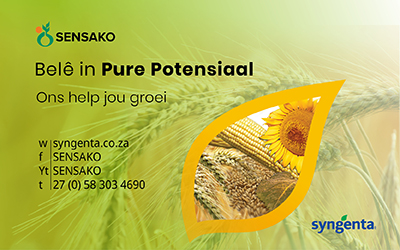It is no secret that pollinators play a crucial role in sustainable agriculture and no one should be more aware of this than producers. There are, however, still incidents where pollinators are adversely affected by the improper use of pesticides. Why is this still the case?
In South Africa, pesticides can only be registered after a rigorous review of the product’s toxicology, which includes the review and approval of comprehensive efficacy, residue, stability and plant compatibility studies that need to be submitted. Furthermore, the label-directed use of the product should not pose an unacceptable risk to human and environmental health, which includes pollinator safety. Only once the Registrar of Act No. 36 of 1947 (Fertilizers, Farm Feeds, Agricultural Remedies and Stock Remedies Act) is satisfied that these criteria have been met, will registration be granted.
The application of any pesticide, whether commercial or household, must follow the label instructions to the tee. The off-label use as well as the acquisition, disposal or sale of an agricultural remedy for a purpose or in a manner other than that specified on the label, are illegal as per Regulation No. R1716 of 26 July 1991 under Act No. 36 of 1947.

– Lara Müller 2018
If the regulatory environment ensures that all these checks and balances are in place to protect our pollinators, then we need to ensure that the pesticides are applied accordingly. This means that the crop adviser and the producer must ensure the products are only used according to label instructions. Any other application is not only illegal, but could have dire consequences for pollinators.
The following points must be kept in mind when developing a spray programme by both crop advisers or sales agents and producers:
Do’s
- Always follow the label instructions and pay special attention to pollinator warnings or instructions.
- Consult Agri-Intel (www.agri-intel.com) for pesticides that are registered for the purposes required. The labels are, however, the final port of call for safety and use instructions.
- Apply directly to the target and ensure minimal spray drift.
- Apply early evening when bees have returned to their hives or early morning before bees start to work.
- Communicate with all beekeepers in the area and inform them of planned spray programmes.
- Scout the area for pollinators before applying.
- Be aware of residues and the amount of time it may still be toxic to bees. Remember that systemic insecticides have long periods of residual activity.
- Ensure that flowering plants or weeds that are attractive to bees are not in the area of application.
- Familiarise yourself with the product. Insecticides are the most hazardous to bees while herbicides, fungicides and plant growth regulators have little or no impact.
- Ensure that equipment has been correctly calibrated for the application.
- Practice integrated pest management and only apply pesticides when absolutely necessary.
Don’ts
- Do not apply directly onto flowers. If no other option exists but to apply pesticides in bloom, direct application onto flowers should be avoided.
- Avoid application while pollinators are active in the area that needs to be treated.
- Do not apply at night because inversion can prevent successful deposition of pesticides onto the target and cause serious drift.
- Refrain from applying any product that is not registered for the specific crop or application method.
- Do not apply during windy conditions, especially if foliar application is the only available option.
- Don’t mix pesticides with substances that could be a lure for pollinators.
- Do not add adjuvants to fungicide applications during bloom or where there is pollinator activity in the field.
- Refrain from applying toxic pesticides to standing bodies of water.
It is important to note that even though a pesticide may be toxic to bees when ingested, it does not mean that it cannot be applied safely. This is the difference between a hazard and a risk. Take bleach as an example. Bleach, whether standing on a kitchen counter or locked away in an impenetrable vault, is a hazard because it can be toxic to humans. However, it only becomes a risk if one decides to drink it. It is the same scenario with pesticides and pollinators, which is why field trials are so important to determine whether bees could be exposed or affected. Most pesticides pose very little risk to bees once the spray is dried off on the plant surface.

– Vida van Schalkwyk 2018
Another key point to ensure pollinator safety is effective and timeous communication between producers and beekeepers. Not only does the producer need to inform beekeepers in the area of intended spray programmes, but beekeepers also need to inform the producer about their intended activities.
Just as we need to protect our crops from devastating pests, we need to nurture and protect our pollinators. Each role-player needs to be extra vigilant and take extreme precautions with regard to crop protection application.

















